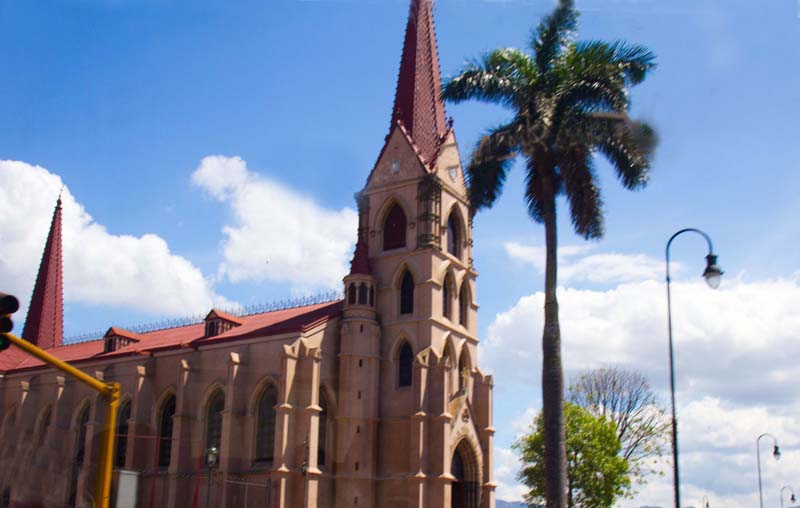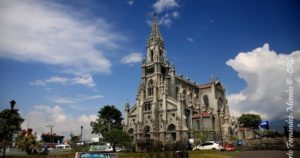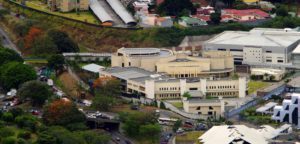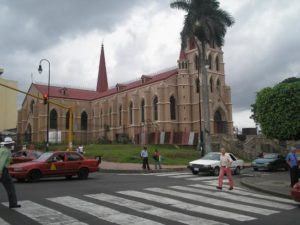San José is the capital and cultural center of Costa Rica, which has a growing network of theaters and museums; It is a modern city with bustling trade and abundant energetic expressions of art and architecture. It has the National Symphony Orchestra that is one of the best in the world, recognized for its national and youth talent and invited to many events in European countries.
Costa Rica has also been successful in the Plastic Arts such as painting, music, film, theater, dance, ballet and literature among others. The large public universities such as the University of Costa Rica and the National University are autonomous institutions with great strength, recognition, and experience; These universities through large exhibitions, activities, seminars, and conferences tend to be a great source of information and development for the whole country.

The Catholic Religion as a cultural legacy of Spain has influenced the lifestyle of the nation, reflected in colorful festivals in honor of the patron saint of each location. Visiting the sacred temples of different religions is an important part of knowing a city. In addition to its religious importance, its architecture can say a lot about the conception of the world that dominated at the time of its construction. Also, knowing different temples can help to better understand the culture of a region. So we invite you to visit the churches and temples of San José where you will learn much more than you expect.
The Church of San Isidro Coronado
A tour of Coronado is not complete without going to its church. It is one of the most magnificent architectural constructions in the country and that amazes all who visit. It is a temple of Roman Catholic worship. Its design is the neo-Gothic style. Constituting a symbol for the city and one of the main tourist attractions of the place.

According to the data in the archives of the Metropolitan Curia, the first place of prayer that made up the San Isidro temple was a small chapel located between San Antonio and Guayabal. In 1862, after a request to build a new temple, a commission was formed in which the priest of San José, Nereo Bonilla and the engineer Francisco Kurtze participated. The final decision was that the temple would be located in a central location on the plain on which the city is located. In that same year, the construction of the temple began.
Various actions were taken to collect the funds, the neighbors contributed construction materials, especially wood. The inauguration of the church was on November 21st, 1880. Among the details that included this building, the most characteristic was its rigid appearance, other aspects such as Half-point arches in all its openings. • The columns were attached to the walls. • The roof with 2 glasses of water. • 2 towers on the cover between which rose another, which was the clock.
The church was a branch of the parish of San Vicente, the problem at the time was that the parishioners wanted their own parish. The priest José Victoriano Mayorga, asks the bishop to convert this church into a parish. Being accepted the request, the parish of San Vicente is divided in two, one of its parts corresponded to San Isidro, being named Mayorga.
The temple was affected by an earthquake, so it was necessary to build a new one. Fundraising activities began in 1924. The engineer in charge of the works was Jacinto Rodríguez with the collaboration of W.G. Luis Kowner. The design of the plans was prepared by the architect Teodorico Quiroz. The structure of the temple was metal, it was obtained from the German house Krupp after negotiations that Father Koch made.
In contrast to the old church made of brick and whose style was colonial, the new temple would be Gothic. The foundations were elaborated to a depth of 4 meters with metal plates whose measurements corresponded to 1 x 2 meters and on them, the aisles were raised. The roof was made from wood, as the neighbors feared future damage caused by earthquakes.
According to what was the original project, some details changed, such as the Gothic towers and rosettes were removed, placing in their place classic style rose windows and the smaller windows. The clock of the old tower was placed again, as it was formally re-inaugurated in 1935.
Metropolitan Cathedral of San José
It is a mandatory visit if you want to know more about the history of the city. This is not just another church, because its construction made San José worth being recognized as the capital of Costa Rica, so its historical value is immense. In addition, its interesting architecture and showcases will impress you once inside. When you are at the Cathedral of San José, also visit its surroundings, there are very nice places not to be missed and in which, definitely, you will live the ethnic culture if you come to visit.
Israelite Zionist Center of Costa Rica
The Museum of the History of the Jewish Community of Costa Rica is a non-profit cultural and educational entity at the service of Costa Rican society and the Jewish community. The fundamental mission of the museum is to collect, document, preserve, interpret and disseminate knowledge about the past, present, and perspectives of the Jewish community in general and the Costa Rican community in particular.

The collections that the museum posses are safeguarded for research, reference, entertainment, education, and exhibition. The Costa Rican Jewish community inaugurated its Museum in September 2005, after a process of 10 years of planning, organization, collection and classification of historical and cultural elements.
This museum covers different topics such as Jewish religion and culture, the arrival of Jews in Costa Rica and has a room dedicated to remembering the victims of the Holocaust of World War II; among other topics.
Mosque of Omar
When talking about historical places in Costa Rica, the first thing that comes to mind are spaces with more than 100 years, but this is not necessarily the case. An example is the Omar mosque, which was built in 2002. This sacred space is loaded with the history of Arab culture and also how it has expanded in Costa Rica. Every Saturday they open their doors so that those who wish to increase their knowledge about their culture can do so. Go ahead and learn more about this religion and Arab history in the only mosque in the country.
Church of La Merced
Did you know that this temple was originally built where currently the Central Bank of Costa Rica stands? Its location changed when an earthquake toppled the church, so the government decided to exchange the land. This Christian temple is part of the main churches of San José and has very particular characteristics, beginning because it was the first church in the capital. San José is the capital and cultural center of Costa Rica, which has a growing network of theaters and museums; It is a modern city with bustling trade and abundant energetic expressions of art and architecture. It has the National Symphony Orchestra that is one of the best in the world, recognized for its national and youth talent and invited to many events in European countries.

Costa Rica has also been successful in the Plastic Arts such as painting, music, film, theater, dance, ballet and literature among others. The large public universities such as the University of Costa Rica and the National University are autonomous institutions with great strength, recognition, and experience; These universities through large exhibitions, activities, seminars, and conferences tend to be a great source of information and development for the whole country.
The Catholic Religion as a cultural legacy of Spain has influenced the lifestyle of the nation, reflected in colorful festivals in honor of the patron saint of each location. Visiting the sacred temples of different religions is an important part of knowing a city. In addition to its religious importance, its architecture can say a lot about the conception of the world that dominated at the time of its construction. Also, knowing different temples can help to better understand the culture of a region. So we invite you to visit the churches and temples of San José where you will learn much more than you expect.
![]()
